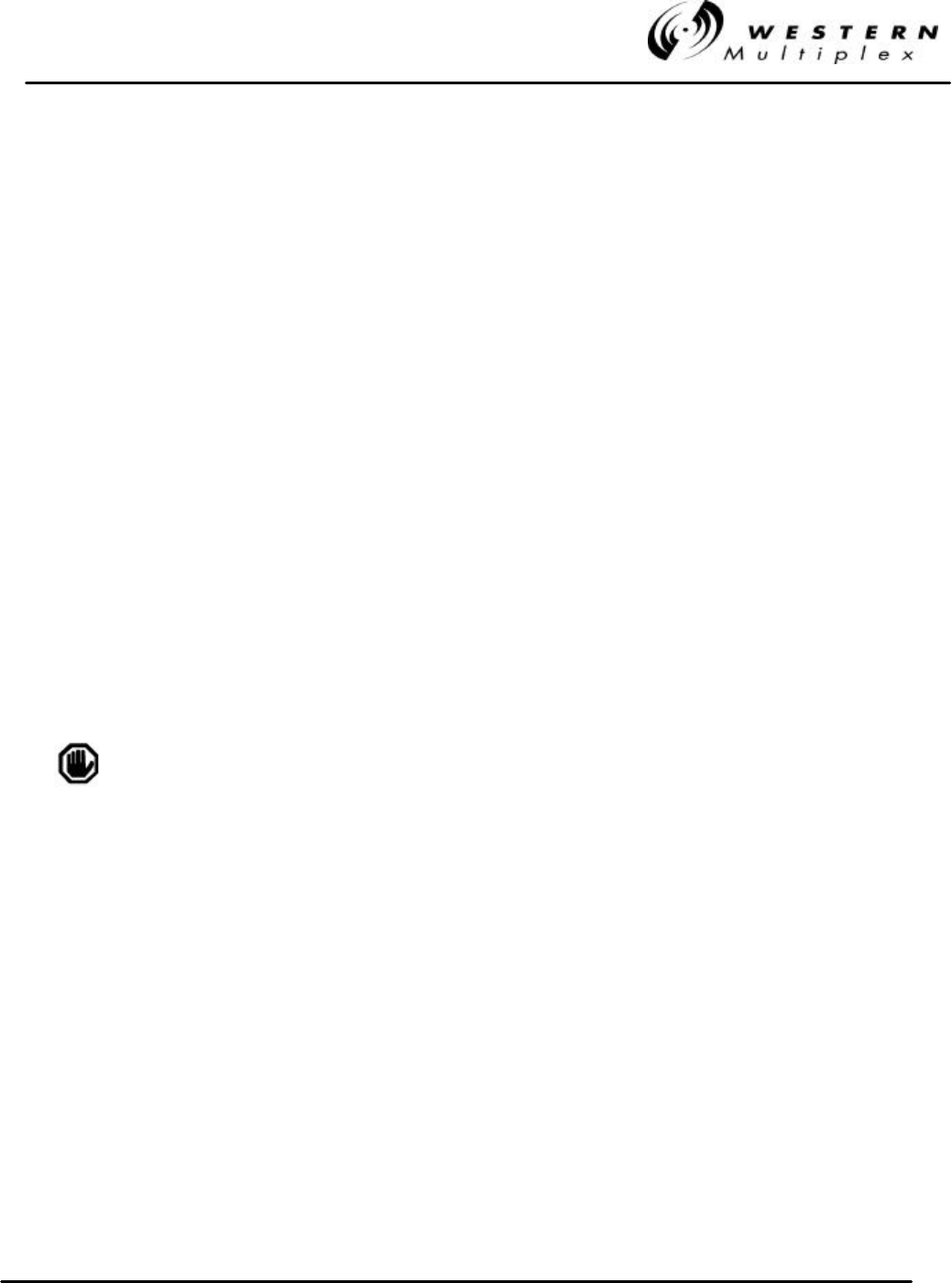User's Manual

INSTALLATION AND MAINTENANCE MANUAL
LYNX.sc E1 FAMILY
SPREAD SPECTRUM RADIOS
SEPTEMBER 1999
SECTION 4: TROUBLESHOOTING PAGE 4-11
If one terminal (or both) has high RSL, this could be caused by a very short path or interference. To
verify the possible presence of interference, remove DC power to the radio which is opposite to the
one that is reading high RSL. Once power is removed, measure RSL on the remaining radio. If RSL
voltage is higher than that which is listed for "Threshold" in the Factory Test Data Sheet, then an
interfering signal is present. If interference is suspected, the easiest potential remedy is to swap
frequency channels on both sides of the link. See Section 4.2 for details. Swap frequencies on both
terminals so that they are the opposite from their original settings (e.g. change A1 into A2 and A2
into A1). Make sure that you change the DIP switch settings to correspond to the channel change.
After both ends are changed, reconnect the radios and determine if the BER alarm is still active. If
the BER alarm is still active, other frequency channels can be installed, or other interference
countermeasures can be tried, in accordance with Section 4.8.
If the BER alarm continues, an external BER test should be performed to verify the extent of bit
errors on the link. See Sections 4.9 and 4.10 for details on bit error rate testing. A BERT can be
connected on one side of the link, the External test mode selected on the near-end radio, loopback
enabled and bit errors evaluated. If the BER is above acceptable levels, continue to troubleshoot the
link.
If all path related and data input problems have been pursued and the BER alarm is still active, the
problem could be related to a radio failure. While radio failure is typically indicated by more severe
alarm conditions, it is possible that one of the radios may be out of specification, and this could be
the cause of the BER alarm. A back-to-back test will verify proper radio operation. See Section 4.9
for details. A threshold test on both radios along with a test to verify proper RF output power would
be beneficial.
Perform a back-to-back test before returning any radio terminal to
the factory for repair. A back-to-back test verifies radio operation.
(See Section 4.9).
If the radios successfully pass their back-to-back testing, the problem is likely with the path or the
connections between the radio and the antenna or interference. Before reinstalling the radios, be
sure to set the output power to the appropriate level for the installation and set rear panel DIP
switches to the desired settings for the installation.










